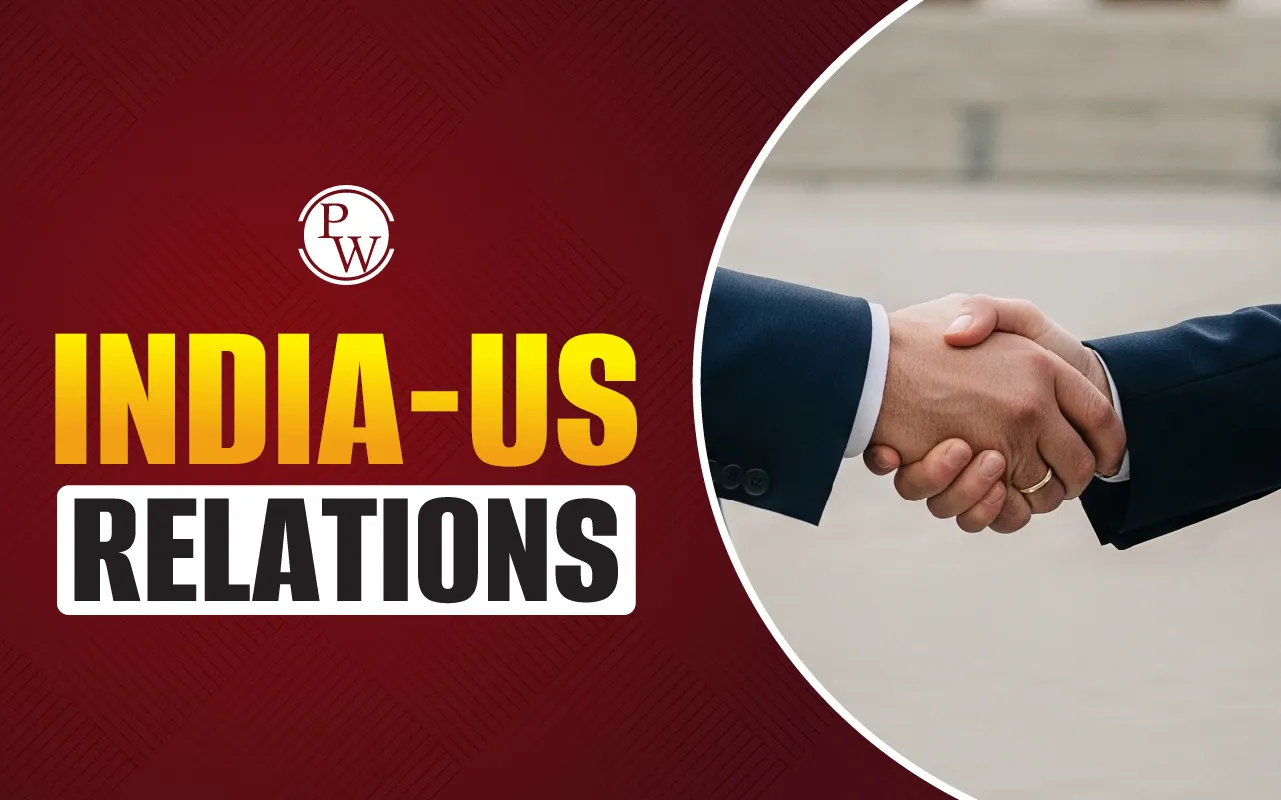
India-US Relations over the years have changed from being estranged democracies to being strategic partners in recent times. In the years before 1991, both countries remained largely detached from each other. But, post the Cold War era, both have turned into strategic partners.
In the present times, India-US relations have become broad-based and multi-sectoral. It ranges from trade and investment to defence and security, education, science, cyber security, etc.
The India-US Relations can be broadly categorized into 3 different Phases, starting from the independence of India in 1947.
Phase 1 (1947-71): This was the height of the Cold War era tensions, where the USA mostly maintained a neutral stance despite being an ally to Pakistan. India was more inclined towards its relations with the USSR. During this phase, the US had a cumulative South Asia policy and not any India-specific policy.
Phase 2 (1971-1991): Focus shifted to India’s Nuclear Non-Proliferation when the Pokhran Test further deteriorated India and USA relations. Furthermore, the USA refused to cooperate with India on the Bhopal Gas Tragedy in 1984.
Phase 3 (1991-Present): After the fall of the USSR, India opened up its economy and searched for new economic partners across the world. The USA compelled India to sign the CTBT agreement after the 1998 Pokhran Tests. The US sided with India during the Kargil War in 1999, and the 123 agreement was finalized in 2008. The USA also granted India the status of a major defence partner.
India and US relations today has scaled new heights but tensions over some issues still remain. The changing governments in both the countries have viewed these bilateral relations in their own perspectives.
The bilateral relations between India and the US are a very important topic for the UPSC Exam. It is important for both the Prelims and Mains. Aspirants need to pay close attention to all the recent issues, summits, conferences, state visits, and other affairs very carefully, both subjectively and objectively. Some of the important facts and figures related to India-US Relations UPSC are mentioned below.
After the fall of the USSR and the end of the Cold War, India and US relations gained momentum for the good. India opened up its economy and was searching for a reliable global partner, and partnering with the US at that time was the obvious option. India-US Relations after the Cold War can be summarized as follows:
India drew a lot of criticism for its nuclear tests in Pokhran in 1998. It badly damaged the India-US relationship. The USA recalled its ambassador to India and imposed economic sanctions on India.
During the Kargil War of 1999, between India and Pakistan, where the USA supported the Indian cause and held talks with the then Pakistani PM, after which the Pakistani forces turned back to their positions beyond the LoC.
In 2001, all the economic sanctions imposed on India were lifted by US President George W. Bush.
In 2005, both India and the US areed to start a dialogue on energy security in the backdrop of India’s energy cooperation with Iran and USA’s sale of fighter jets to Pakistan.
India and the USA also signed the Civil Nuclear Cooperation Initiative in 2005. It lifted the three-decade USA moratorium on nuclear energy trade with India.
US President Barrack Obama also backed India’s bid for a permanent seat at the United Nations Security Council (UNSC) in 2010. Obama also recognized India as a major defence partner in 2016.
India-US Trade relations have evolved into a global strategic partnership over the years.
In 2024, India’s goods trade with USA was valued at $ 129.2 billion. India’s exports stood at $ 87 billion whereas the imports stood at $ 41 billion.
India had a trade surplus of almost $ 45 billion with USA in 2024.
USA ranks third in terms of largest investor in India. Between 2000 and 2024, there was a Foreign Direct Investment (FDI) of $ 65 billion.
In recent times, the relations between India and the USA have been deepening in various sectors, including defence, technology, space cooperation, etc. Both countries are also engaged in counter-narcotics collaboration. Key areas of cooperation in the India and relations include:
Defence: The USA has already recognized India as a major defence partner. Both countries have signed several defence agreements, including LEMOA, COMCASA, BECA, etc. They are also collaborating on the manufacture of F414 engines for India’s light combat aircraft.
Technology: Both countries launched the Initiative on Critical and Emerging Technologies (iCET) in 2023 to focus more on areas like telecommunications, Open RAN, 5G and 6G technologies, etc.
Space Cooperation: Recently, India has also become a part of the Artemis Accords led by the USA. India and the US are also planning a space mission together to the International Space Station.
Energy Security: Off late, the USA has become the major supplier of LNG to India. US-designed nuclear reactors are also being planned to be built in India as a part of the Civil Nuclear Agreement of 2008.
P2P Ties: Indian diaspora in the USA continues to play a dominant role in strengthening ties between both countries. India plans to open new consulates in Boston and Los Angeles.
Despite certain ideological issues and challenges existing, India-US Relations is one of the most influential and strengthening strategic partnerships in the global stage at present.
Ready to boost your UPSC 2025 preparation? Join PW's UPSC online courses today!
